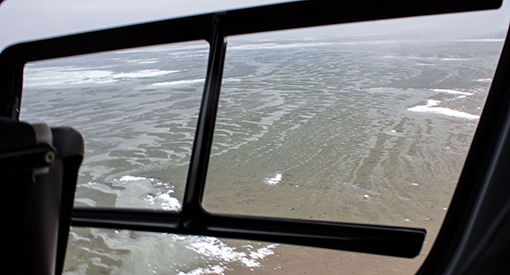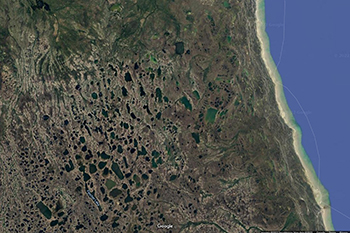Dr. Wanli Wu
Wapusk National Park
Dr. Wanli Wu is a Senior Ecologist working for Parks Canada. He is responsible for supporting ecological monitoring and assessment, reviewing state of parks reports and consulting on environmental impact assessments in Canadian national parks. Some of his earliest publications involve measuring sea ice concentration and mapping permafrost in Wapusk National Park. These days, it is a place of great meaning for him.
On what makes Wapusk special
“Wapusk was established with the purpose of protecting the polar bear denning areas. We monitor ecological integrity, which means measuring ecological conditions, stresses and impacts to ecosystems in our national parks and reserves. Ecological monitoring programs like this exist for all parks. The results are assessed every five to 10 years for the statuses and trends of the ecological indicators we monitored.

“Before Wapusk was established as a national park, there was a lot of existing research going on there for snow geese and polar bears. The park was established as a protected area based on that existing research.
“There are two dominant ecosystems in Wapusk National Park: the wetland and the tundra ecosystems. Climate change impacts permafrost conditions in the tundra ecosystem. The changes of permafrost are related to soil conditions and soil-water content, that in turn affects the vegetation change in the tundra ecosystem. Wetter conditions means losing some plant species, whereas other plant life thrives in water, so the vegetation cover will switch from one type to another.
“We monitor and study changes in sea ice and permafrost conditions, and how those changes can affect wildlife and the ecosystem. Polar bears rely on sea ice for hunting seals in winter seasons, as polar bears can catch seals when they pop out of water. If the sea ice were to change significantly, that affects the length of time polar bears can walk on the ice and catch their food. Consequently, it will influence polar bear health conditions.
“The mandate of Wapusk National Park is to protect the polar bear denning areas, which are located in the relatively higher peat plateau areas inside the park. Bears dig their dens in the two to four-meter thick peat layer. The reason they can dig the particular shape of their dens is due to the frozen peat-soil material. If the permafrost melts, the peat will fail to hold, and the den will collapse. So the permafrost conditions in the peat layer is critical for the bears’ dens. Just like humans build houses, if the bears don't have a solid peat foundation to build their dens on, their homes will collapse.
“Wapusk is also a challenging place to do field work. There is no road inside the park, so we may only fly in during the field work season, and it can be difficult to find a solid spot to land a helicopter in the wetlands in summer. In some cases, we have to use satellite images and previously taken photos to analyze the patterns of land cover changes, and find out where the ground is relatively higher and dry to land safely.
“If you look at a Google map, you can find out where the coastal beach ridges are, which have very beautiful land cover patterns in the images, like a painting. Those ridges are relatively higher and dry.

“Sometimes when I was sitting inside a helicopter and looking outside the window, the grounds inside the park’s vast and flat lands are just like a colorful carving, especially in May or June when the tundra covered snow is almost melted. You can see white patches where the snow turns to water, and within those shallow wetland water bodies are green, yellow, pink and purple-coloured algae patches.
“I still work for Parks Canada, though not specifically at Wapusk National Park. I've seen a lot of change in our parks over time. The most notable changes, however, are the new, young faces in our teams who continue to make our ecological monitoring and management work very strong. This is something I've been very happy to see over the past 15 years.”
On the experience of being in Wapusk
“Wapusk is so huge, you couldn't possibly go everywhere by foot. When you are on the land, you get such a feeling... and it's that Wapusk is so flat! There are no mountains or rolling hills there, it's just so flat, especially along the west coast areas of Hudson's Bay.
“In the time between spring and summer, when the ocean and sea ice are melted and the weather gets warmer, that's when the fog rolls in frequently. When it's foggy, helicopters can't fly. When you're on the ground, you can't see anything far away. It's like you're soaking in the ocean of fog.
“We prepare for these conditions before we go out for our field work: packing food, sleeping bags, tents and electric fencing, just in case we will have to wait out the weather overnight. Of course, all of those things have to be packed with limited sizes in order to fit into a helicopter.
“After working in Wapusk several times, whenever I hear the sound of a helicopter, I feel excited. It has special meaning to me. When you're working in the field, it means life. It means hope.”
- Date modified :